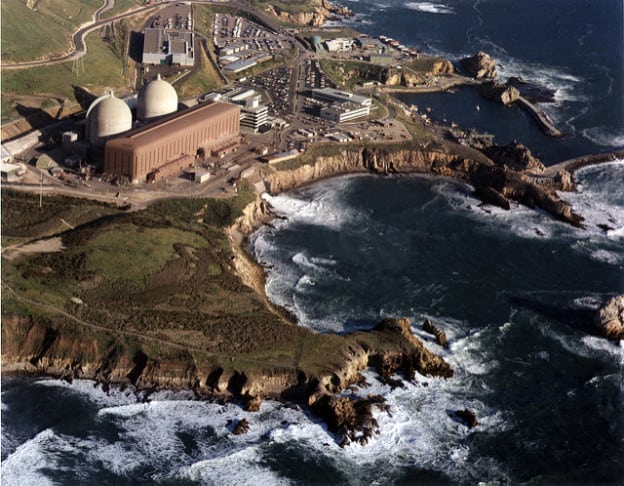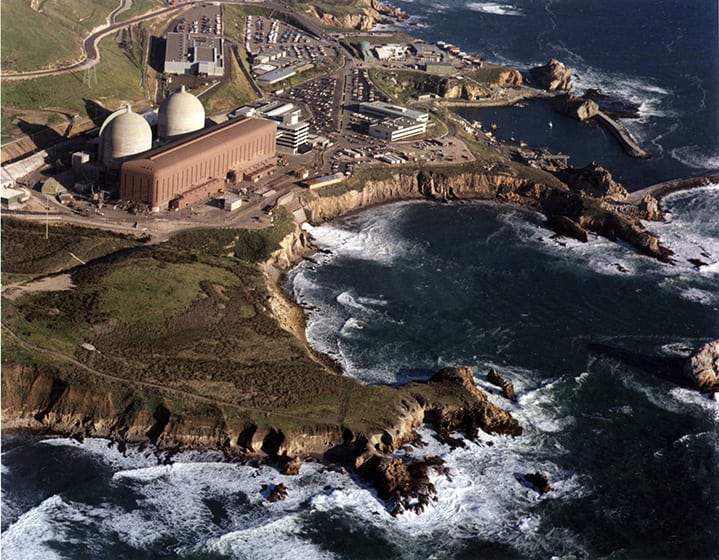California Legislature Passes Bill to Support Reliability Reserve, Lifeline for Diablo Canyon Nuclear Plant
Credit to Author: Sonal Patel| Date: Thu, 30 Jun 2022 13:52:21 +0000

California’s State Legislature has passed a bill that could extend the operating lives of existing generating facilities slated for retirement, potentially providing a new lifeline for the 2,240-MW Diablo Canyon Power Plant (DCPP), which has a premature closure date in 2025.
Both houses on June 29 passed AB-205 Energy, an energy trailer bill that Gov. Gavin Newsom’s administration negotiated to address the state’s power generating sufficiency as the state contends with climate change impacts and other challenges amid its transition to a clean energy future.
“Extreme events from climate change, including heat waves, wildfires, and drought, combined with other factors, such as supply chain disruptions, are jeopardizing California’s ability to build out the electrical infrastructure needed to maintain affordability and reliability,” Legislature declared in the bill. “California must ensure electricity reliability during this period of heightened risk, which includes extraordinary near-term measures and substantive changes to mid-term energy policy, while also ensuring the multifaceted California electrical grid is best positioned to sustainably and equitably achieve California’s clean energy future, climate targets, and air quality requirements.”
Enacting a Strategic Reliability Reserve
If signed by Gov. Newsom, as expected, AB-205 will authorize a newly created Strategic Reliability Reserve overseen by the state Department of Water Resources (DWR) that will incorporate up to 5 GW of capacity. As part of that measure, the bill establishes an Electricity Supply Reliability Reserve Fund, which allows the agency—which has traditionally managed California’s water usage—to build, own, operate, contract, or purchase power from any facility that would further the state’s reliability objectives.
A June 26–issued preliminary summary of California’s Budget Act of 2022 indicates the state will provide $2.2 billion to support the Strategic Reliability Reserve, and $550 million to support distributed backup electricity backup assets and utility-scale assets to support energy reliability.
“This funding enables California to decide at a later date to reverse the slated premature closures of Diablo Canyon units 1 and 2 in 2024 and 2025,” said American Nuclear Society President Steven Arndt and Executive Director and CEO Craig Piercy in a joint statement on June 30.
However, the bill notes that Electricity Supply Strategic Reliability Reserve Agreements made by the DWR, in consultation with the California Public Utilities Commission (CPUC), the California Independent System Operator (CAISO), other balancing authorities, and the State Air Resources Board, will prioritize investments that “do not compete with generating facilities already planned for development and disclosed by load-serving entities or local publicly owned electric utilities.”
AB-205 also lays out a priority order for energy resource investment. It says that the DWR should prioritize “investments in feasible, cost-effective zero-emission resources, and then feasible, cost-effective conventional resources.” Notably, DWR contracts under the provision entered before Dec. 31, 2023, will “not be subject to competitive bidding or any other state contracting requirements,” it says. The provision also applies only to contracts, grants, or loans that directly contribute to grid reliability by October 2027.
The bill also separately creates a Distributed Electricity Backup Assets Program that will incentivize deployment of new zero- or low-emission technologies. The program, however, notably will also work to fund efficiency upgrades, maintenance, and capacity additions to existing power generators that could serve as “on-call” emergency supply or load reduction for the state’s grid during extreme events.
“The state board, in consultation with air pollution control districts and air quality management districts, as appropriate, shall identify the cleanest available technologies and equipment that would qualify for the incentives for backup generators under the guidelines, inclusive of the emissions of greenhouse gases, criteria air pollutants, and toxic emissions associated with obtaining and using feedstock fuels,” the bill reads.
As significantly, the bill establishes a Demand Side Grid Support Program to incentivize dispatchable customer load reduction and backup generation operation as “on-call emergency supply” and load reduction for the state’s grid during extreme events. This measure, notably, seeks to incentivize customer conservation during extreme events with upfront capacity commitments and/or per-unit reductions in load. Payments could be made to participating individual entities, aggregators of multiple energy customers, and local publicly owned electric utilities and load-serving entities.
At Issue: Diablo Canyon’s Reliability Contribution
The legislation is a crucial win for the Newsom administration, which had engaged in the last-minute brokering, and contentious negotiations with lawmakers to get it passed. A key sticking point, according to CalMatters, is its “fossil-fuel heavy response,” and expanded authority for the DWR, which will now have a firmly vested interest in the state’s energy ongoings.
But it is also a win nuclear advocacy organizations, trade groups, power companies, and environmental and citizen groups that have pushed against Pacific Gas & Electric Co. (PG&E’s) voluntary plan to permanently shutter the Diablo Canyon nuclear plant near Avila Beach, California.
PG&E announced it would shutter the 1,138-MWe Unit 1 and the 1,151-MWe Unit 2, both Westinghouse pressurized water reactor units, in June 2016, upon the expiration of the reactors’ operating licenses—November 2024 for Unit 1 and August 2025 for Unit 2.

While the CPUC approved PG&E’s application to shutter the plant in January 2018, an initiative to replace the plant’s power with zero-carbon options was enshrined in state law by California’s former Gov. Jerry Brown in September 2018.
Gov. Newsom’s administration in April, however, suggested retirement of the nuclear plant may adversely affect California’s stretched energy system. The governor has indicated the state is mulling applying for the Biden Administration $6 billion Civil Nuclear Credit (CNC) Program—a measure aimed to keep struggling nuclear power plants online—to keep Diablo Canyon open past its scheduled closure.
In a May 23 letter to Energy Secretary Jennifer Granholm, Cabinet Secretary Ana Matosantos laid out the state’s interest in the CNC. “We have experienced serious electricity reliability challenges in the last two summers, including a multi-day extreme heat event across the western United States that resulted in rotating outages in August 2020 and the loss of a major transmission line due to fire in 2021 that reduced import capability into California by 4,000 MW. We are also contending with supply chain disruptions, tariff issues, and other factors that are delaying new clean energy installations, as 6,000 MW of existing generation is scheduled to retire,” she wrote. “The single largest resource planned for retirement is Diablo Canyon Power Plant (DCPP), a zero carbon, base load generator that supplies approximately 8.5% of California’s total electricity generation and provides capacity during the ‘net peak’ evening hours.”
Matosantos said the Newsom administration’s proposed strategic reliability reserve would speed up the state’s transition to clean energy and support reliability. “However, additional actions are needed to meet a projected gap of 1,800 MW between energy demand at net peak and already ordered procurement before reflecting extreme events and further delays in projects coming online. To maximize options to maintain electricity reliability as new projects come online, the state is evaluating a temporary delay of the planned retirement of DCPP,” she said. “DCPP is slated for closure in part based on economic circumstances. Continuing operations would require substantial investments.”
Matosantos asked the DOE to reconsider an interpretation in its April 2022–issued nuclear credit program guidance that would exclude reactors that recover more than 50% of their costs from cost-of-service regulation, underscoring Diablo Canyon’s economic woes. “In California’s view, this exclusion is overly broad, especially where cost-of-service does not cover the costs for which funding is being sought,” she wrote.
For DCPP to extend operations, the plant would incur “significant transition costs over the next four years to perform necessary studies, invest in plant enhancements, and obtain licenses and permits,” she said. “Yet there is no existing cost recovery mechanism for those transition costs. Rather, those transition costs would be operating losses, and under the governing ratemaking, DCPP’s operator could not recover those costs when it sells output from the plant into the California Independent System Operator electricity market. The fact that the revenue that DCPP may generate in the electricity market comes from cost-of-service ratemaking does not alter the fact that extending operations at DCPP would cause significant economic losses of the sort that the Civil Nuclear Credit Program was designed to address.”
The DOE on June 17 responded to California’s request, soliciting public comment on whether the guidance should be revised to eliminate the requirement that an applicant may not recover more than 50% of a nuclear reactor’s cost from cost-of-service regulation or regulated contracts. The comment period closed on June 27. The DOE’s CNC program schedule continues to envision that credits under the $6 billion program will be allocated to selected certified reactors over a four-year period beginning on the date of the selection through September 30, 2031.
The DOE’s first award cycle will be directed toward “nuclear reactors most at risk of imminent closure,” which means an applicant must demonstrate that it has made a public filing on or before November 15, 2021, (the date of enactment of the Infrastructure Investment and Jobs Act) announcing its intention to permanently cease operations of the nuclear reactor on or before Sept. 30, 2026. Following the closure of the application and bid submission period on July 5, 2022, DOE will certify nuclear reactors that meet the requirements in the CNC April 2022 Guidance.
PG&E in a letter to the DOE on Tuesday said it would consider applying to the CNC, but it asked the agency for a 75-day extension to the deadline, Reuters reported. An extension “is needed to provide PG&E the time to collect and analyze the information and prepare an application,” the utility reportedly said.
—Sonal Patel is a POWER senior associate editor (@sonalcpatel, @POWERmagazine).
The post California Legislature Passes Bill to Support Reliability Reserve, Lifeline for Diablo Canyon Nuclear Plant appeared first on POWER Magazine.